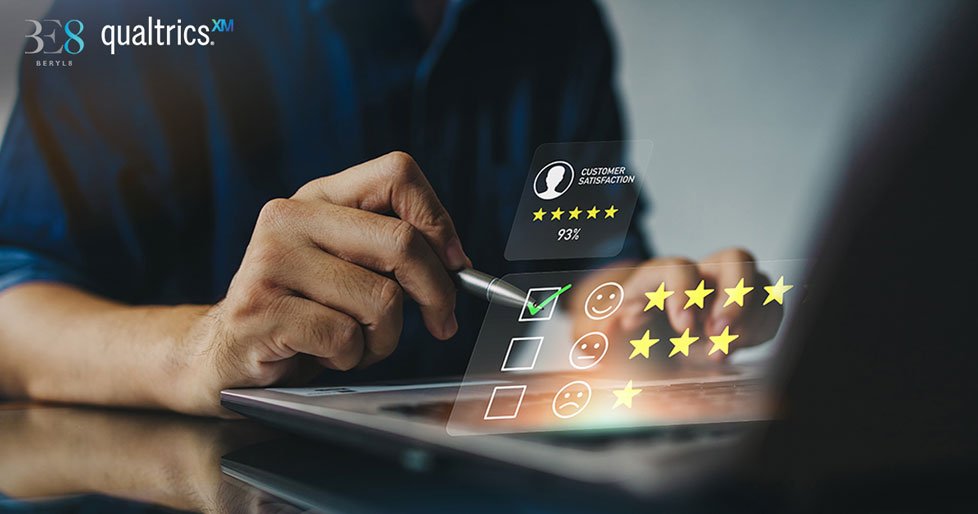Top 8 Data Governance Trends Defining the Future

As a business, you’re likely aware of the significant rise in the importance of data in recent years. With growing computing power and an ever-increasing volume of data available for use, data has become an essential part of daily operations.
However, this rapid growth also brings heightened responsibilities for securing and managing your data. This falls under the scope of data governance a strategy designed to ensure your data is accurate, up-to-date, and securely stored.
As a result, data governance is quickly becoming a critical topic, with the market projected to grow from $3 billion to $15 billion by 2030. To keep pace with this expansion, it's crucial to understand how data governance is evolving in response to a more complex compliance landscape.
That’s why we've identified the top eight data governance trends shaping the future of data management. By adopting these trends, you can ensure your data strategy remains current and effective.
What Is Data Governance?
When you’re architecting a solution in your digital infrastructure, you’ll likely encounter problems around data governance. Essentially, data governance involves defining how data should be collected and used within an organization. The core questions it addresses include:
- What does “data” mean to the business?
- Where is data sourced from and stored?
- How accurate should the data be to be used?
- Who within the organization can use the data - and how?
Because it’s such an all-encompassing term, many organizations have divided the responsibilities of data governance into different roles. There will be someone overseeing the overall data governance strategy - someone essentially in charge of quality management - as well as a team of IT experts who implement the policies created in the data governance strategy.
Data governance is important for a range of different reasons. First of all, can you imagine trying to complete your business’s daily operations without easy and straightforward access to data? A data governance strategy can help you streamline your use of data.
It also acts as quality assurance when it comes to the content of the data itself. Inconsistencies across different systems or simple errors can pose a significant roadblock for any organization trying to use data effectively. Data governance creates procedures for dealing with these roadblocks. It also standardizes best practices for analyzing data, and building trust across teams.
Finally, data governance is becoming more critical from a legal and regulatory standpoint. Companies must comply with privacy regulations such as GDPR and CCPA to keep customer data safe and protect the business in case of incidents. By creating policies and procedures, data governance can help you be more confident that you’re complying with these laws.
An example of a data security incident is a privacy breach, such as the one experienced by Giant Tiger. In March 2024, the Canadian retailer was affected by a data privacy breach caused by cyber attackers compromising one of its vendors' systems and data.
8 Top Data Governance Trends for 2025
Now that you have a grasp of the basics of data governance, how can you keep your strategies up to date? Here are the key trends in data governance that you can implement in your organization.
#1: Automation in Data Governance
Automation is becoming increasingly prevalent in business software, driven by the need to efficiently manage repetitive tasks across large data landscapes. This trend is also evident in data governance. New software capabilities are making it easier to automate essential tasks such as asset classification and curation. When implemented correctly, automation can boost productivity and minimize errors in your data.
#2: Real-Time Processing
Traditionally, data management has involved three stages: collection, processing, and analysis. However, many organizations are now merging the data collection and processing stages. Instead of processing large quantities of data in batches, data is now formatted and processed immediately upon collection.
This approach, known as real-time processing, enables you to generate valuable insights much more quickly—you won’t have to wait days for processing to complete.
Before implementing this capability, you must ensure that real-time processing is the correct route for your organization. This type of processing is very resource-intensive, and you’ll need very secure data privacy procedures. However, real-time processing can be a great solution real-time processing can be a great solution if you need quick and efficient insights from your data.
#3: Artificial Intelligence and Machine Learning
The launch of ChatGPT has unlocked a wealth of opportunities for business innovation. Organizations are increasingly integrating AI into their digital frameworks, including applications like the U.S. Federal Enterprise Architecture (FEA) and various private sectors.
One of the primary uses of AI in data governance is enhancing the accuracy of datasets. AI can swiftly and accurately scan large volumes of data to identify inaccuracies and anomalies. Additionally, it can detect potential data breaches by monitoring for suspicious behavior and alerting leaders to possible security threats.
Threat detection exemplifies how AI can be leveraged to enhance security. By implementing advanced detection systems powered by machine learning, organizations can analyze specific network patterns to identify unusual activity that may indicate an imminent data breach.
#4: Cloud-Based Solutions
Storing your data in the cloud, rather than on-premises, significantly increases the scalability of your data governance. It also supports the current remote-friendly work environment, allowing data to be accessible from anywhere.
However, as you embark on your cloud transformation journey, it’s essential to invest time and effort in maintaining data security and privacy. To mitigate risks, you should implement your data governance policies and controls from the outset.
#5: Decentralization and Democratization
Traditionally, data has been controlled by a select group of specialists within organizations. However, more people are now seeking access to data to make informed decisions, thanks to the decentralization and democratization of data.
Data democratization focuses on empowering everyone in your organization to use data independently, provided there are appropriate safeguards and controls in place. By using a data intelligence platform, you can eliminate the technical jargon that often complicates data, enabling everyone to work with data-driven insights easily.
#6: Data Ethics and Privacy Regulations
For customer-facing companies, data ethics have become an increasingly important topic. This is especially relevant given that data privacy regulations, such as GDPR and CCPA, remain stringent and show no signs of becoming less strict. Customers need to trust that your organization will use their data ethically and fairly. Here are some key ethical considerations regarding data usage:
- Ensure you obtain informed consent for data collection.
- Maintain transparency in your data usage practices.
- Use collected data only for its intended purpose.
- Protect data from unauthorized access and use.
#7: Monitoring and Lineage
The most effective use of data comes from organizations that actively monitor data flow—often referred to as data lineage. This allows you to understand how data evolves from its origin to the final insights utilized within the company.
Monitoring data and establishing its lineage are essential for troubleshooting and problem-solving, as this "family tree" of data can help identify the source of any inconsistencies within the data production system. If you aim to enforce high levels of data quality, monitoring and lineage should be integral components of your data governance strategy.
Emerging trends like data observability are also gaining popularity. This approach focuses on tracking, understanding, and optimizing data quality and performance in real-time. By incorporating these practices into your data governance framework, you ensure that not only do you monitor your data, but you also gain deeper insights into its behavior, leading to more informed decision-making processes.
#8: Data Validation
Another crucial element of ensuring data quality is implementing processes that guarantee your data is accurate and reliable. Without verifying data quality, you cannot trust the insights derived from your datasets, rendering the entire process ineffective.
One effective way to enhance data quality is by applying validation rules. For instance, if you collect email addresses through email lookup, you must validate this data by cross-referencing it against another data source.
Data validation can also help standardize your data. When collecting information from various sources and methods, it often arrives in different formats, complicating direct comparisons between datasets. However, data validation processes can reformat data, ensuring a consistent approach across your organization.
Data Governance Trends: The Future of Data
To ensure that your organization stays at the forefront of data and technology, it's essential to adopt an up-to-date approach to data governance—especially in a rapidly evolving landscape.
That's why we've compiled our top eight data governance trends for the future of data collection, processing, and analysis, which include leveraging AI and embracing data democratization. Start implementing these trends in your data governance policies today! Or for more information, feel free to contact Beryl8 at contact us!
Source: alation



